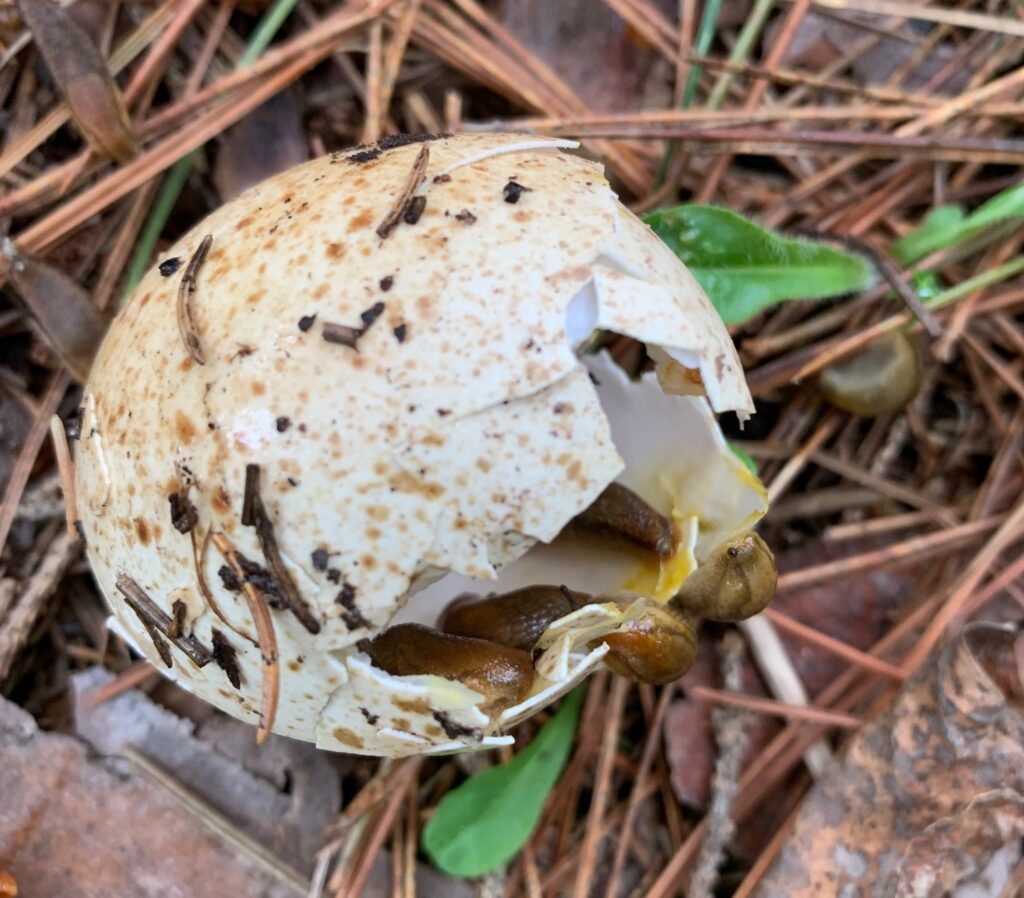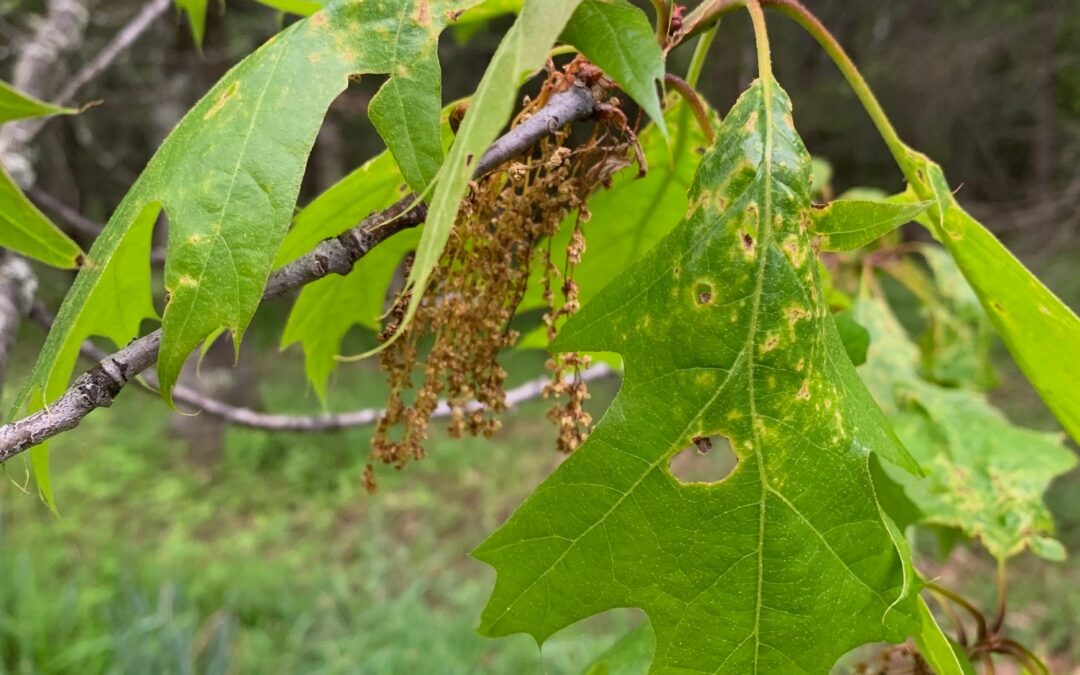When my dog, Poppy, and I started our walk this morning, there were 3 or 4 ravens squawking across the road. We went over to see what the commotion was about, and they flew away.
Like a lot of birds, wild turkeys (Meleagris gallopavo) lay their eggs on the ground. They lay a big pile of 4-17 eggs according to the Cornell Lab of Ornithology. They do not protect them in any particular way, but just a big pile. Once they are all laid, they must sit on them at least some of the time. It takes 25-31 days for the eggs to hatch. They are probably easy pickings for almost any predator. It’s amazing that wild turkeys are thriving and expanding their range all over the eastern part of the United States.
Females raise the chicks. They frequently form groups of females and chicks, combining families with chicks of different ages. The males live in separate groups.
We often see them along the road or in open spaces, where they feed on seeds and berries. Acorns are an important part of their diet in the autumn, though they eat other seeds and berries all year. They will dig up bulbs and eat seeds from grasses and sedges. They will also eat slugs, snails, beetles and other small invertebrates. They need to have grit for their digestion, so they eat gravel along the road, which is probably why we see them so often as we are driving.

At night turkeys roost in trees. I’ve seen them fly up to the branches of cottonwood trees near my son’s house for the night. They seem like impossibly big birds to be taking off from the ground and flying so high. One way to find where they are roosting is to look for their poop on the ground under the trees. In the morning they fly back down to find food.
Turkey populations declined during the end of the 19th century and the beginning of the 20th century, because of hunting and habitat loss. DDT may also have caused their eggs to become thin. A mother hen sitting on 18 eggs would have created quite a pressure on the egg shells at the bottom of the heap. In the 1950’s we never saw wild turkeys along the road. Their population has certainly resurged.
This is another reason to plant oak trees. Many animals eat the acorns that fall to the ground in the autumn. In addition to the turkeys, deer, squirrels, small animals and large birds eat acorns.
When I returned from my walk, the slugs had already found the egg shell and were eating what remained of it. It only took them a few minutes to smell the egg yolk that was left on the shell. These scavengers devoured all the contents remaining on the shell.


